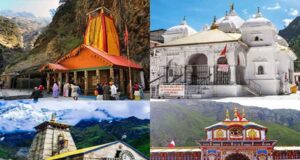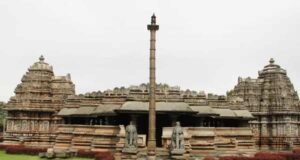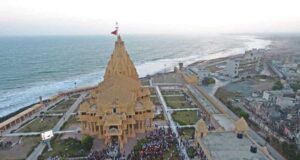Ritual Art Forms of Kerala
Aadu theyye, Aadadu theyye, (Dance God, Dance!) exhorts a folksong in Kerala where God and man becomes one through performance. Ritual art forms in the state can bewitch you with their colour, energy and perfection in performance, which equal a Shakespearian play. The art forms which were developed in ancient times are retained in their traditional sense in different parts of the state.
Theyyam

Red is the colour and blood is the flavour of this trance performance specific to Malabar (north Kerala) region of the state. Performed before shrines sans stage or curtains in praise of the mother goddess Kali, the art form captures the live feel of a rustic sense of piety.
The themes performed include the ones of triumph of the goddess over Daruka or the evil one. Always performed by men who enact even female parts, Theyyam showcases a combination of dance, mime and music which reflect the tribal art forms of the state. Of the 400 and odd parts (characters) which are played by the performer during an eventful night, the most famous ones are Raktha Chamundi, Kari Chamundi and Muchilottu Bhagawathi.
The Theyyam performer in his exotic costumes and exaggerated make up has become the art face of Kerala as they are featured in high profile tourist resorts. However, the real charm of the act can be captured only during their live performance before the Gods.
Patayani

A green face servant of Goddess Kali dances the theme of her victory over Asuras or demons in this energetic performance which resembles Theyyam. Performed by traditional artists whose families do not indulge in any other trade other than this ritual, Patayani is performed in Kali temples set against the scenic Pamba River in south Kerala. The performer dances to the rhythm of the percussion instruments, Chenda and Thappu which is supposed to be masculine in character.
Also a taunting ritual which targets the follies of various communities through sarcastic chants Patayani could be called a reformist art form of the state. Patayani masks are made with the fresh husk of arecanut palms. The characters which are important during the performance are Bhairavi (Bhadrakaali), Yakshi, Pakshi (bird) and Kaalari (Siva).
Mudiyattu

The art form which resembles Theyyam in its theme of Kali victory over Daruka is, however, different in its form. Performed in some Kaali temples of Ernakulam and Kottayam districts (central Kerala), the dance is performed by the Kuruppu or Marar communities which are temple bound. A ten day ritual, Kalamezhuthu which is also called `Dhuli Chitram’ or powder painting precedes the performance. Kalamezhuthu is a huge ritual drawing of the goddess which is erased with tender palm leaves before the performance.
The performers of Mudiyattu heavy makeup with conventional facial paintings and don gorgeous attires with tall head gears give a touch of the supernatural.
Koothu
Koothu is a ritual performance where the Jester or the fool becomes the story teller. Developed by Chakyar community into a socio-religious art form where the characters in the epic, Mahabharata and Ramayana would be used to make fun of the next door neighbor who could represent a stereotypical vice of the society.
When the Chakyar performs in his inimitable lyrical style everyone in the audience would sit at the edge of their seats as even they could be the target of his sharp sarcasm. The performer wears heavy makeup on his face also paints his bare chest and moves to the tune of the percussion instrument, Mizhavu.
Margam Kali

A folk performance perfected by the Syrian Christian community in the state, Margamkali is performed by a dozen women who dance in quick steps around a tall wick lamp. In makeup and costume this performance is on the blander side with the performers wearing simple traditional wear, Chatta and Mundu. To add a touch of colour sometimes a peacock feather is fitted in the dancers’ hair bun.
The performance which has its origins in early 12th century is an allegorical enactment of the life of Christ with the lamp representing Him and the twelve dancers the twelve disciples. While the community is believed to the be the first converts who were baptised by St Thomas during his historical visit to Kerala, the performance is usually done in two parts which begins and with the narration of his life story.
The song which is in a very old version of Malayalam, the native language, is not accompanied with any musical instruments. The performance is held in traditional Christian households.
Theeyattu

Fire play is what Theeyattu literally translates to. In this enchanting solo dance drama the performer dances with fire in his stretched-out hands. Dressed in a colorful red attire which matches the colour of the flames which he so easily manoeuvres, the performer dances to the rhythm of percussion instruments.
The hues of the performance are further enhanced by the Kalam or the powder drawings on the ground. The dance is a visual interpretation of the lives of Lord Shiva, goddess Saraswathy and their son, Ganapathy. It is enacted in Bhagavathy temples of Thiruvalla, Kottayam and Thripunithura.
Kannyarkali

A community-oriented folk art, Kanyarkali or Desathukali, which is performed by the Nair community of Palakkad area owes its origin to the martial arts tradition of the area. Nairs known to have the fervour of warriors were part of the royal army of the region which is always under threat from the neighboring Konganadu.
Performed around a tall wick lamp, the dance has a twist of comedy even though the actions resemble martial art training sessions. The art form offers the viewer a total feast of a performance which combines the agile movements of martial arts with the rhythmic grace of folk dance. The performance usually lasts for four days and is performed by six to twenty men. The orchestra includes ilathalam or cymbal and percussion instruments like Chenda, Maddalam, Edakka and Udukku. The performance is usually done in temples from March to April.


